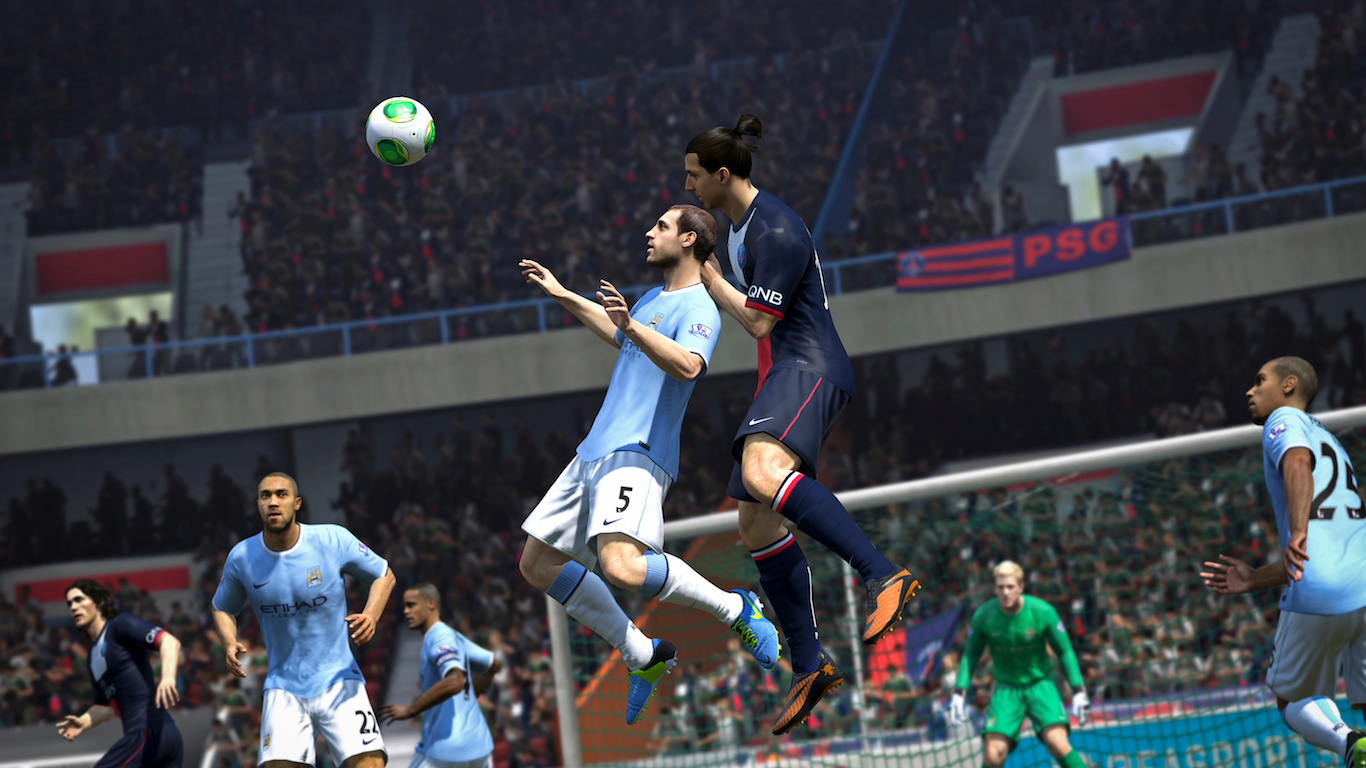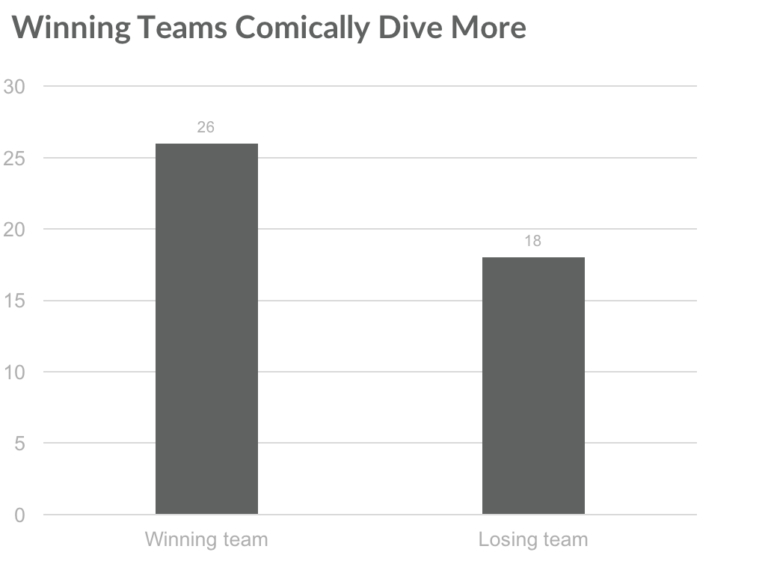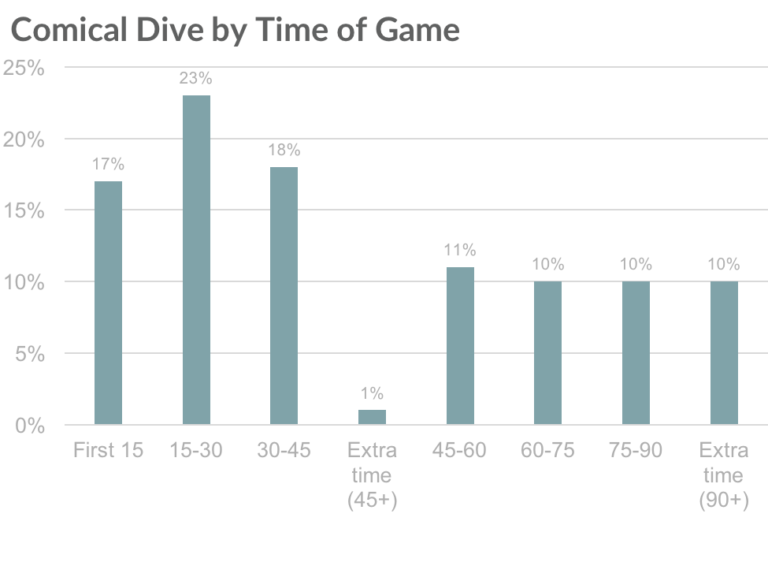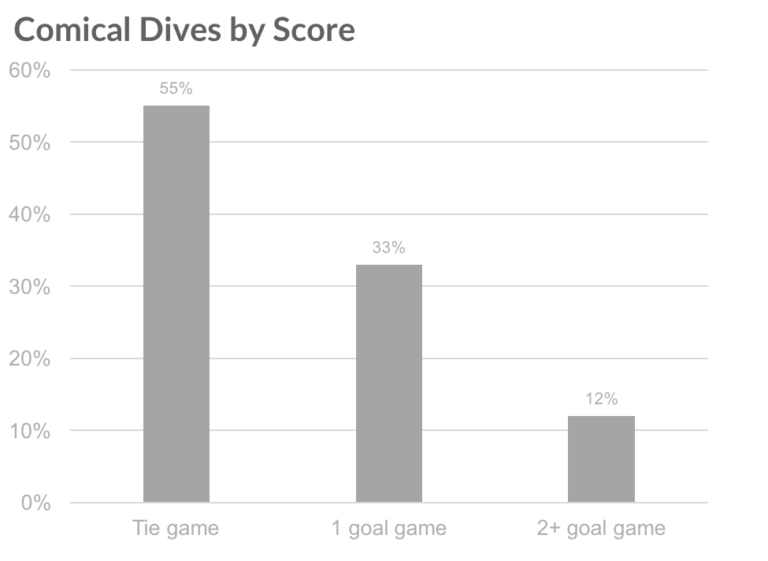
This post may contain links from our sponsors and affiliates, and Flywheel Publishing may receive
compensation for actions taken through them.
By Gene Munster of Loup Ventures
Once every four years, the Loup Ventures team turns into big soccer fans. We’re attracted to the spirit of the World Cup, a truly global tournament, but the purity of the game and the tournament is often diluted by “The Dive.” For those of you new to soccer, “diving,” or what some call a “flop,” is when a player exaggerates an injury in order to draw a penalty or strategically run out the clock.
As we watched the games and the dives (on average 4 egregious examples/game) we wondered if diving is more of a science than an art. So we decided to study the phenomenon and found that there is, in fact, more science than art to diving.
The Comical Dive
The Oxford Dictionary defines a soccer dive as, “a deliberate fall when challenged in order to deceive the referee into awarding a foul.” Our research looks at a subcategory of the dive, the “comical” dive. We consider a dive to be “comical” when the level of acting is humorous. While this may seem subjective, the “comical” benchmark makes it more objective.
Methodology
With the help of Invisible, one of our portfolio companies, we studied 25 random games in this year’s World Cup. Invisible helped us track:
- Number of times players fell to the pitch
- Number of comical dives
- Time of game the dive occurred
- How long the game was delayed
- Score at the time of the dive

Findings
- The most important takeaway from our study: teams with a lead comically dive 44% more often, likely in an effort to run out the clock.
- On average 9 falls to the pitch/game. The majority (75%) of these falls had an element of subtle acting.
- On average 4 comical dives/game.
- Comical dives lasted an average of 45 seconds.
- 59% of dives occurred in the first half, 41% in the second half (both include extra time).
Below are two graphs that visualize our findings:


Biggest Offenders
If you are wondering which teams dove the most, the top three were Iran, which averaged 7, Sweden (5), and World Cup champion France (3.7). The three teams that averaged the least amount of flops (0) were England, South Korea, and Denmark. Note, the number of sample games varied between 1 and 3. If you are interested in looking further at the data, click here. From our findings, we believe that the “art” is not an art after all, but a calculated science.
Disclaimer: We actively write about the themes in which we invest: virtual reality, augmented reality, artificial intelligence, and robotics. From time to time, we will write about companies that are in our portfolio. Content on this site including opinions on specific themes in technology, market estimates, and estimates and commentary regarding publicly traded or private companies is not intended for use in making investment decisions. We hold no obligation to update any of our projections. We express no warranties about any estimates or opinions we make.
Cash Back Credit Cards Have Never Been This Good
Credit card companies are at war, handing out free rewards and benefits to win the best customers. A good cash back card can be worth thousands of dollars a year in free money, not to mention other perks like travel, insurance, and access to fancy lounges. See our top picks for the best credit cards today. You won’t want to miss some of these offers.
Flywheel Publishing has partnered with CardRatings for our coverage of credit card products. Flywheel Publishing and CardRatings may receive a commission from card issuers.
Thank you for reading! Have some feedback for us?
Contact the 24/7 Wall St. editorial team.




